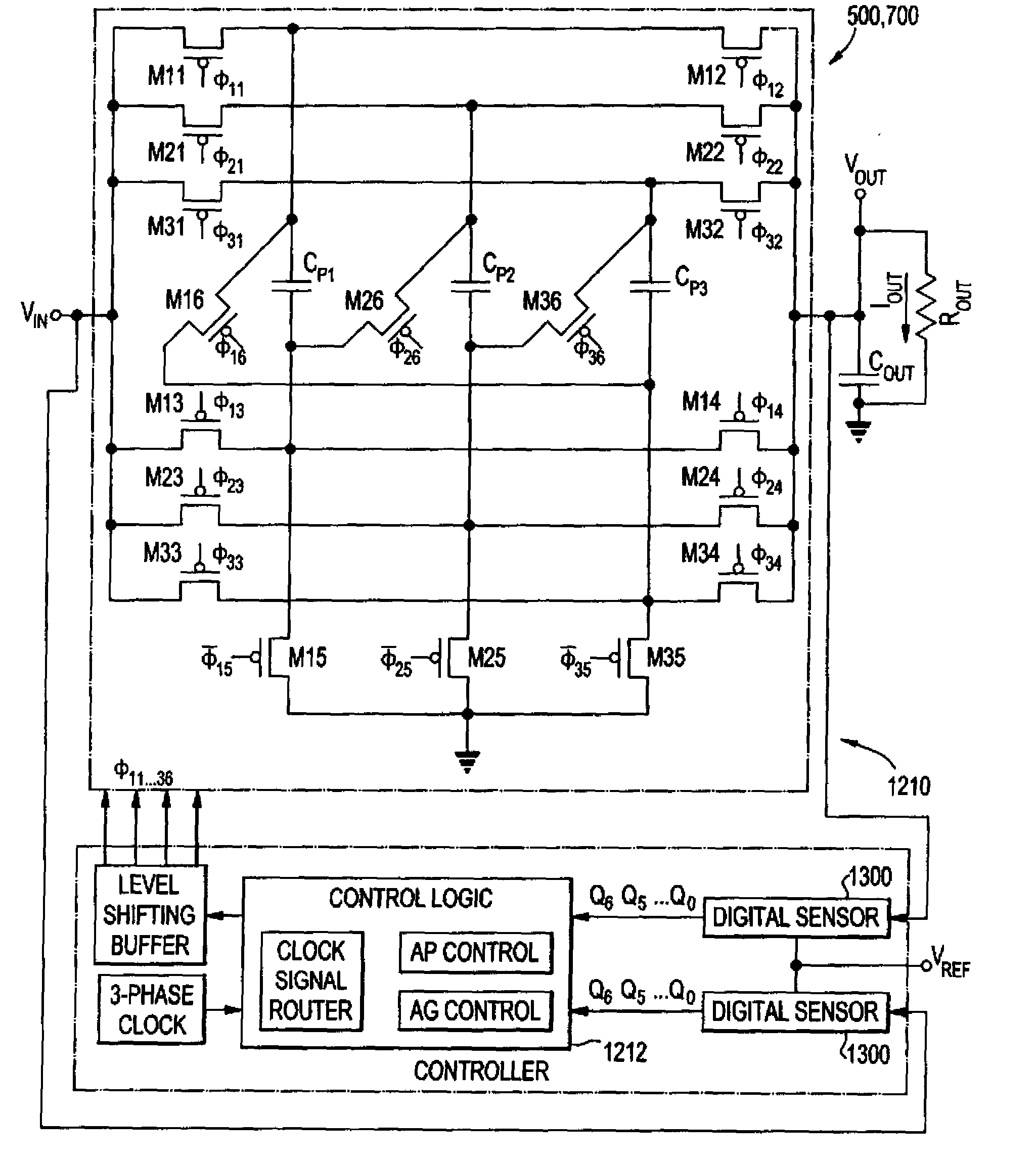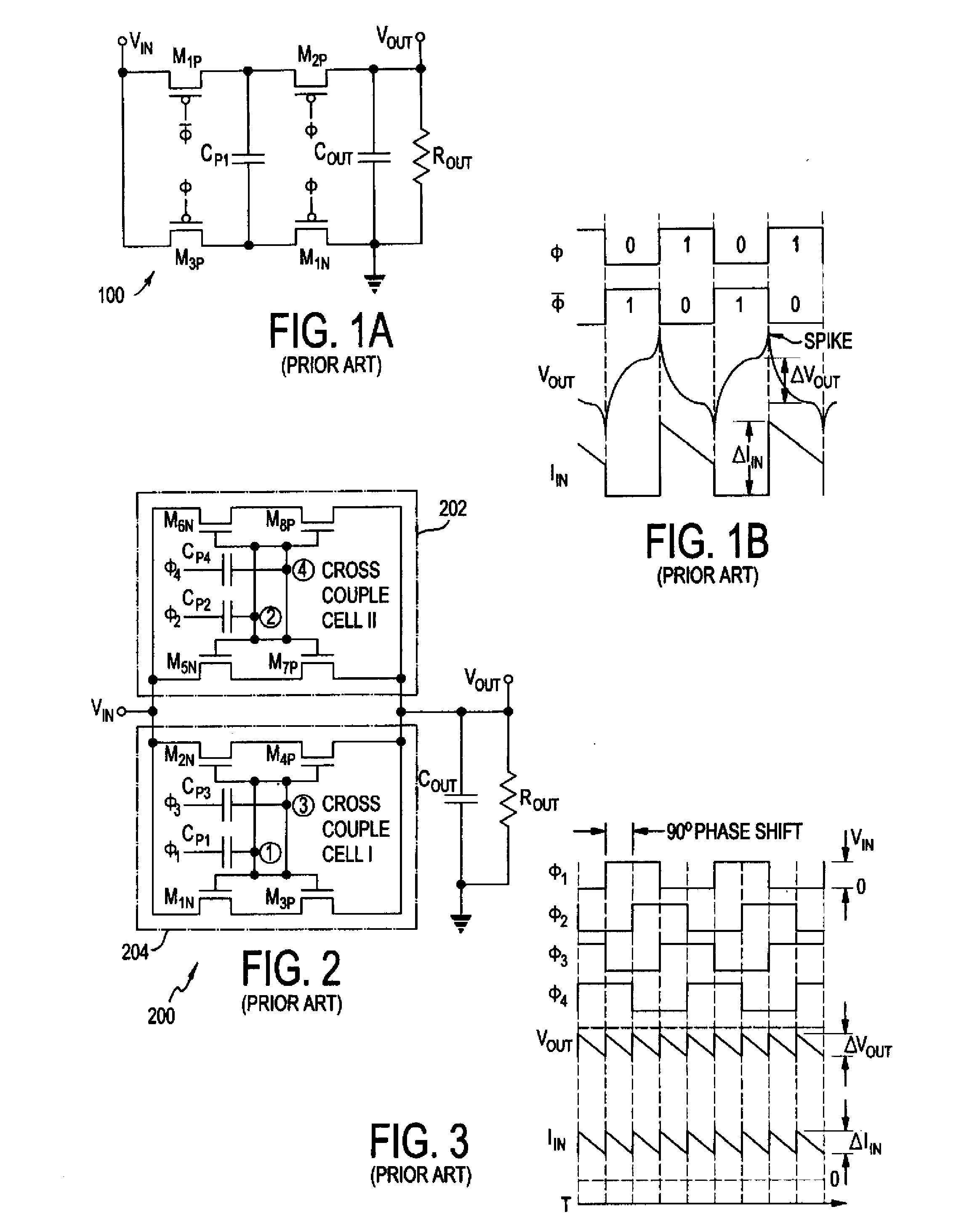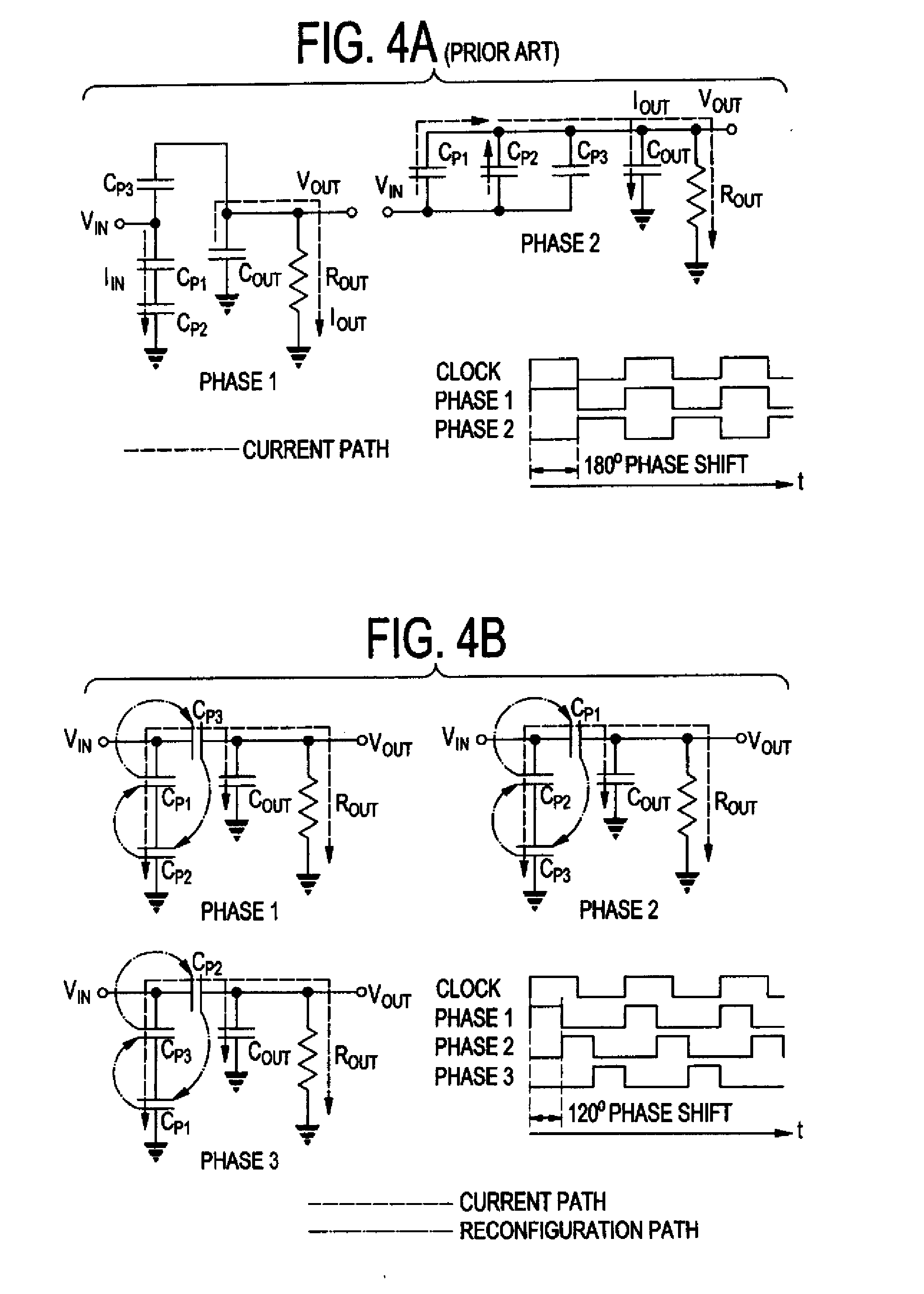Adaptive-gain step-up/down switched-capacitor DC/DC converters
- Summary
- Abstract
- Description
- Claims
- Application Information
AI Technical Summary
Benefits of technology
Problems solved by technology
Method used
Image
Examples
Embodiment Construction
[0056]A preferred embodiment will be set forth in detail with reference to the drawings, in which like reference numerals refer to like elements throughout.
[0057]The preferred embodiment is directed to a new topology that provides the same advantage but using only half the switches. The preferred embodiment uses three capacitors and eighteen switches, although that number is illustrative rather than limiting. FIG. 5 shows the complete power stage 500. Using the on / off characteristics of a switch, the switch array can be configured to give six different gain states: 1 / 3, 1 / 2, 2 / 3, 1, 3 / 2, 2, and 3. The task is accomplished using a three-phase clock. The clock signals are routed according to the desired gain. The clock signals and capacitor configuration for all the gain settings are shown in FIGS. 6A and 6B, respectively. In each phase of the clock, at least one capacitor gets charged from the input, while one capacitor is discharged at the output. The other capacitor is used either ...
PUM
 Login to View More
Login to View More Abstract
Description
Claims
Application Information
 Login to View More
Login to View More - R&D
- Intellectual Property
- Life Sciences
- Materials
- Tech Scout
- Unparalleled Data Quality
- Higher Quality Content
- 60% Fewer Hallucinations
Browse by: Latest US Patents, China's latest patents, Technical Efficacy Thesaurus, Application Domain, Technology Topic, Popular Technical Reports.
© 2025 PatSnap. All rights reserved.Legal|Privacy policy|Modern Slavery Act Transparency Statement|Sitemap|About US| Contact US: help@patsnap.com



